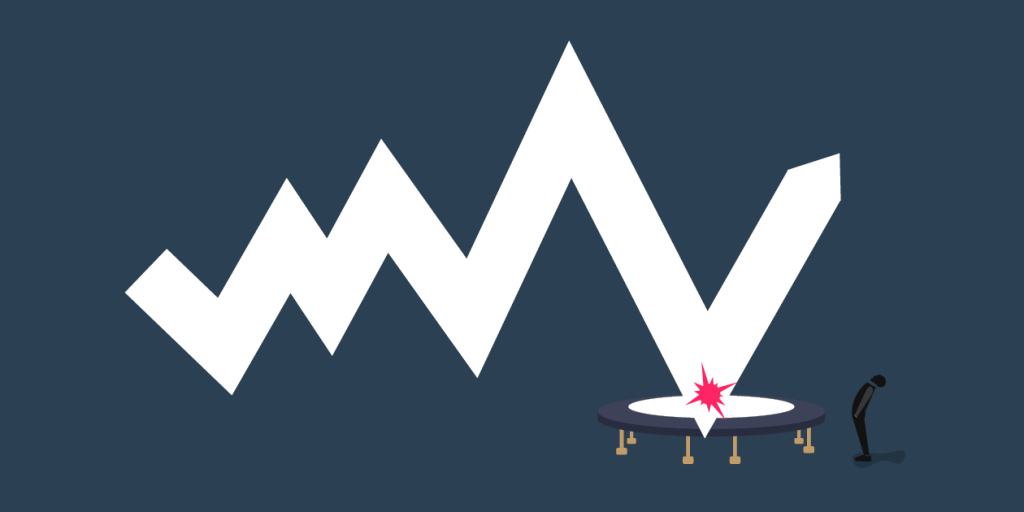
Have you ever found yourself browsing a website that hooks and interests you to the point of scrolling endlessly, page after page? Or maybe even closing the tab as soon as you land on it? With the extensive scope of the digital world, it is filled with diverse user experiences, interests, and niche. What you find interesting may not be interesting for others, and vice versa. From generating engaging content, seamless navigation, to appealing designs and aesthetics, websites that strike a perfect balance keeps users intrigued. On the other hand, websites with poorly designed user interfaces or irrelevant content may experience swift departure from users. This balance of factors is not only crucial for retaining users, but also plays a pivotal role in a metric known as “bounce rate”.
In this article, we will discuss the basics of bounce rate, the importance, and how this metric can help you navigate through the challenges of improving your website. Without further ado, let’s jump right into it.
What is Bounce Rate?
What is bounce rate? The bounce rate is a digital marketing metric that shows the percentage of visitors to a website who leave after viewing just one page. Essentially, it represents the ratio of single-page visits to the total number of visits. A high bounce rate indicates that a significant portion of visitors exited the site without further exploration. It’s a crucial metric in web analytics, helping assess how well a website captures and holds visitors’ attention.
How Can Bounce Rate Affect your Business
The bounce rate of your website can significantly impact various aspects of your business, including conversions and sales. A high bounce rate may indicate that visitors are leaving your site quickly without engaging further, and this can have several adverse effects on your business.
- Reduced Conversions
A high bounce rate often correlates with lower conversion rates. If visitors are exiting the site without interacting with your calls-to-action or completing desired actions, such as making a purchase or filling out a form, your conversion rates may suffer.
- Diminished Sales Opportunities
Bounce rates can directly affect your sales opportunities. When potential customers leave the site prematurely, they may not have the chance to explore your products or services fully. This, in turn, decreases the likelihood of converting leads into actual sales.
- Negative Impact on SEO
Search engines consider user engagement metrics, including bounce rate, when determining the relevance and quality of a website. A high bounce rate may signal to search engines that your content is not meeting user expectations, potentially affecting your search engine rankings and visibility.
- Impaired Brand Perception
High bounce rates can also impact how visitors perceive your brand. If users consistently encounter unengaging or irrelevant content, it may negatively influence their perception of your business, reducing the likelihood of return visits and future interactions.
- Missed Engagement Opportunities
Each bounced visitor represents a missed opportunity for engagement. Whether it’s signing up for newsletters, exploring more content, or interacting with your brand, reducing bounce rates opens up more chances to connect with your audience and nurture relationships.
What is a Good Bounce Rate?
What is a good bounce rate? Well, the optimal bounce rate can vary depending on the website’s type and objectives. In general, a favorable bounce rate typically falls within the range of 26% to 40%. It’s important to consider the specific context and purpose of the website:
- Low Bounce Rate (0% to 25%)
While an extremely low bounce rate might initially seem positive, it may be expected for certain content types like single-page blog posts or informational pages. However, excessively low bounce rates could indicate tracking issues or inaccurate analytics implementation.
- Moderate Bounce Rate (26% to 40%)
This range is often considered good for many websites, signifying a balance between engagement with multiple pages and acknowledging that some visitors might find what they need on the first page.
- High Bounce Rate (41% and above)
A higher bounce rate may suggest challenges in meeting visitor expectations, issues with website design, content relevance, or user experience. It’s crucial to investigate and address the reasons behind a high bounce rate.
How to See the Bounce Rate of a Website?
Your website’s bounce rate can be tracked on Google Analytics 4 (GA4).
Select a Property > Go to the Search Bar > Then type “bounce rate”
Orr you can select a certain date range to determine the bounce rate of your website in a specific time frame.
Example: “bounce rate Aug 1, 2023 – Aug 31, 2023”
The bounce rate will appear on the right hand side of the screen.
What are the Factors Affecting Bounce Rate?
As mentioned earlier, there are a couple of factors that can affect bounce rate such as content relevance, website aesthetics, design, and navigation experience.
- Relevance of Content
The relevance of content is a critical factor influencing website bounce rates. When the content aligns with visitors’ needs and expectations, they are more inclined to stay engaged and explore further.
On the contrary, irrelevant or poorly-targeted content can swiftly lead to a higher bounce rate, as users are more likely to exit the page if it doesn’t meet their expectations or provide the information they were seeking.
Ensuring that the content resonates with the target audience is fundamental in reducing bounce rates and fostering a positive user experience.
- Page Load Speed
The speed at which pages load on a website significantly impacts user experience and bounce rates. Slow-loading pages can be a source of frustration for visitors, increasing the likelihood of them bouncing off the site.
- Website Design and Navigation
In today’s era of where visual appeal and usefulness meets, websites are meticulously crafted for aesthetic appeal and functionality, the design and user experience of a website wield significant influence over user engagement and bounce rates. A user-friendly and visually appealing design can serve as an inviting gateway, encouraging visitors to explore multiple pages and delve deeper into the content.
- Mobile Responsiveness
In an era marked by the widespread use of mobile devices, the importance of mobile responsiveness in web design cannot be overstated. The absence of a mobile-responsive design can contribute to a higher bounce rate, as users may encounter difficulties navigating or viewing content on their mobile devices.
- Target Audience Understanding
Deeply comprehending the characteristics and preferences of the target audience holds the key to a website’s success. The strategic alignment of both content and design with the specific preferences and needs of the target audience emerges as a powerful tactic to minimize bounce rates. When website elements resonate with the audience, visitors are more likely to remain engaged, exploring additional content and features.
How to Improve your Website’s Bounce Rate?
After you’ve checked your bounce rate whether it’s on the lower or higher percentage, there are ways to improve it. In this section of the article, we will discuss six possible ways to improve your website’s bounce rate.
- Create Relevant & Compelling Content
Crafting relevant and compelling content is a cornerstone of reducing bounce rates and keeping visitors engaged on your website. The key lies in understanding the specific needs and interests of your target audience.
Make your content informative and engaging, providing insights that fulfill the expectations of your audience. Whether through detailed articles, how-to guides, or multimedia presentations, delivering content that aligns with the search intent enhances user satisfaction and encourages prolonged exploration.
- Optimize Load Speeds
Reducing page load times is a pivotal strategy to enhance user experience and mitigate bounce rates. By addressing technical aspects such as optimizing images, leveraging browser caching, and minimizing unnecessary scripts, you can significantly improve the speed at which your pages load.
A faster website not only satisfies users’ expectations for immediate access to content but also contributes to a more seamless and enjoyable browsing experience. This optimization aligns with the modern demand for efficiency, discouraging visitors from prematurely leaving your site due to slow-loading pages.
- Implement User-Friendly Navigation
A user-friendly and intuitive navigation structure is paramount in improving your website’s bounce rate. When visitors can easily find what they’re looking for, they are more likely to explore additional pages.
Streamline menus, use clear labels, and organize content logically to guide users seamlessly through your site. Enhancing website navigation not only reduces frustration but also encourages prolonged engagement, making it less likely for users to exit quickly.
- Mobile Responsiveness
Ensuring mobile responsiveness is crucial for minimizing bounce rates. A responsive design guarantees that your website functions seamlessly on various devices, especially on mobile. As users increasingly access content on smartphones and tablets, a mobile-friendly experience becomes instrumental in keeping visitors engaged.
A lack of mobile responsiveness may lead to user frustration and higher bounce rates, emphasizing the importance of adapting to the preferences of a mobile-centric audience.
- Internal Linking
Strategic internal linking is a powerful tactic to decrease bounce rates and enhance the overall user experience. By seamlessly connecting relevant pages within your site, you guide users to explore additional content that aligns with their interests.
Thoughtful internal linking not only keeps visitors engaged but also distributes authority and improves the overall structure of your website. Whether through related articles, suggested reading, or navigational links, fostering a well-connected network of internal links encourages users to delve deeper into your site, reducing the likelihood of premature exits.
- Monitor User Behavior
Monitoring and analyzing user behavior is a fundamental practice for optimizing website performance. Through the use of analytics tools, website owners gain valuable insights into how visitors interact with their site.
Examining metrics such as page views, time spent on pages, and click-through rates allows for a comprehensive understanding of user preferences and behaviors.
By identifying patterns and trends, webmasters can pinpoint areas of improvement, recognize high-bounce-rate pages, and make informed adjustments to enhance the overall user experience.
Regularly monitoring user behavior not only facilitates data-driven decision-making but also lays the foundation for continuous refinement, ensuring that the website remains responsive to the evolving needs and expectations of its audience.
Conclusion
The bounce rate of your website stands as a pivotal metric that profoundly influences the success of a business online. A low bounce rate is indicative of an engaged audience, fostering increased opportunities for conversions and sales.
The importance of this metric extends beyond mere statistics, directly impacting brand perception, SEO rankings, and the efficient utilization of marketing budgets.
By recognizing the important role that bounce rate plays in user engagement, businesses can strategically tailor their online presence to captivate visitors, nurture relationships, and ultimately drive meaningful results in terms of sales and conversions.
In the digital landscape, where user interaction is paramount, a low bounce rate emerges as a key indicator of a thriving and successful online presence.









